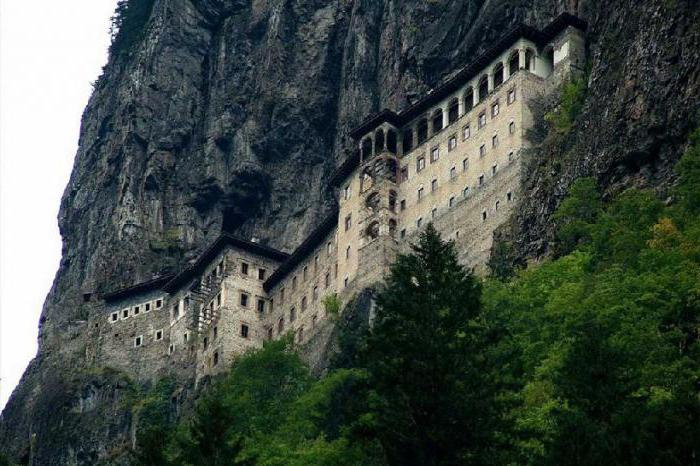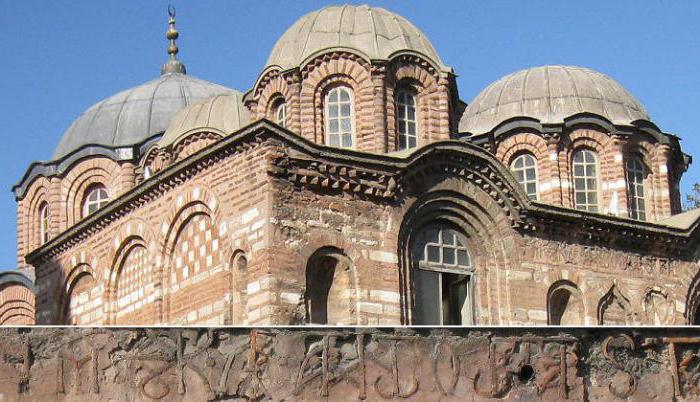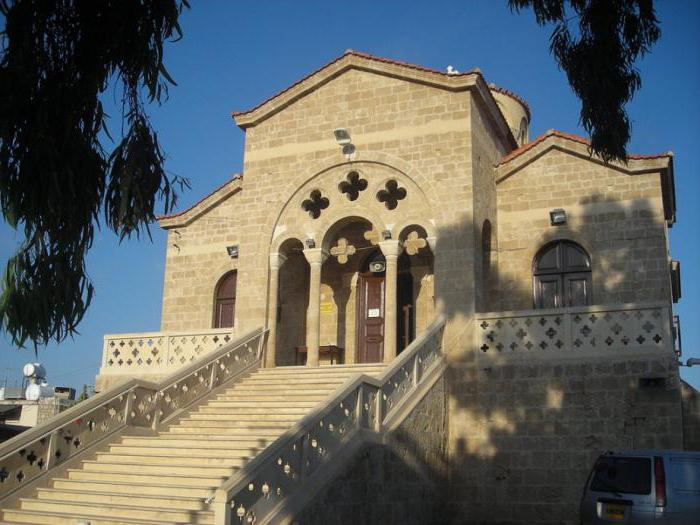The Greek word panagia is translated as "the Most Holy." If you look at the dictionaries, you can see that this Christian term refers to several objects. In the Middle Ages, a precious ark was designated by panagia, where particles of the relics of many saints were stored. Later, in the monasteries, the prosphora was proclaimed in honor of the Most Holy Theotokos. Panagia is also a small skillful icon with the images of the Mother of God, it is a distinctive sign of the rank of Orthodox bishops and is worn by them on the chest.
But the special, sacred meaning of the word correlates with the image of the Mother of God. Initially, Panagia and the Virgin were epithets. And later her icon-painting images dedicated to her monasteries and temples began to be called so.
The first images of the Most Holy in iconography
The canons of Orthodox icon painting formed in Byzantium. There is also a tradition to call Panagia an icon depicting the Blessed Virgin. The main type was the figure of Oranta (Prayer), depicting the Virgin, with open hands and outstretched hands, as if seeking to intercede for all the afflicted. In front of Oranta’s chest, there is a circle, like a medallion, in which a belt image of the Infant Christ is inscribed, which essentially symbolizes the presence of the Savior “in the womb”.
This kind of praying Mother of God dates back to the history of the early Christian fresco. One of the original images of Oranta can be considered wall painting of the 4th century in the Roman catacombs of the May cemetery. This is one of the first images of the Mother of God with a characteristic, patronizing gesture, and the Holy Baby in front of the breast.
Great All-Holy
In Russia, one of the first was the famous image of Oranta in the Hagia Sophia Cathedral in Kiev: a six-meter-tall smalt mosaic of the 11th century. Like the whole temple, this work was created by Constantinople masters. Later, the epithet "Almighty" began to be applied to the types of icons of the Protection, Signs, and Payers. However, the Great Panagia is called only the full-length image of Our Lady of Oranta, in front of whose chest is a half-length image of the Holy Baby inscribed in a circle.
Orthodox communities and places of worship
In honor of the Most Holy Theotokos, buildings for worship were erected and monastic monasteries were created. Therefore, Panagia is also the name of Orthodox monasteries and temples. Many similar structures were built on Byzantine lands. Time, war and religious controversy did not spare these fundamental constructions. But most of the ancient complexes that escaped destruction during the Greek-Turkish wars, are still operating in Cyprus and Greece. After part of the territories came under Turkish rule, many churches and monasteries were destroyed. Others, like Panagia Sumela, remained abandoned and turned into monuments of Orthodox architecture, or converted into mosques. But still, they remain objects of pilgrimage for Christians.
Ancient rock monastery
In Turkey, near Trabzon, there is a unique complex. This is Panagia Sumela, an Orthodox monastery abandoned by the monks after the sad events of 1922. The monastery is built on a ledge of chalk cliffs, and part of its premises is located in artificial and natural grottoes. The monastery was founded and built at the turn of the 4th – 5th centuries, and the impregnable wall and many buildings were erected before the 14th century.

The monastery was always accompanied by luck and prosperity. Until 1461, the monastery was under the special patronage of the Byzantine emperors. After the fall of Constantinople, all the privileges and inviolability of the monastery, according to the command of the Ottoman Sultan Selim, were preserved and strictly supported by subsequent rulers. Perhaps the prosperity of the monastery was promoted by the protection of the miraculous icon of the “Hodegetria of Sumel”, which has been kept in the monastery since its foundation. According to legend, the icon was painted by the apostle Luke. In the community there were two more great relics: the gospel of St. Christopher and the cross of Emperor Manuel Comnenus. In addition, the monastery library kept very rare ancient manuscripts.
During the brutal genocide (1922) of the Turks against the Pontic Orthodox Greeks, the monks, leaving the monastery, hid holy relics in the chapel. In 1930, they were transported to Greece. Until today, in the monastery, with the permission of the Turkish authorities, services were held several times. Since 2015, restoration work has begun, which will make it possible to add the monastery of Panagia Sumela to the UNESCO list as a World Heritage Site. Recovery is ongoing, but the complex is open to pilgrims and tourists.
Existing monasteries
Panagia Sumela is not the most ancient monastery. In the Greek and Cypriot territories there are many operating monasteries in honor of the Most Holy Mother of God, erected during the Byzantine Empire.
The oldest functioning monastery is the Panagia of Hozoviotissa (1088) on the Greek island of Amorgos. The magnificent rock complex attracts a large number of visitors and is famous for making an amazing honey-almond liquor.
Panagia Amasgu is a monastery of the beginning of the XII century, where many frescoes of that time and the original church of the end of the XI century are preserved. Until the end of the 18th century, the complex acted as a man’s monastery; after a long decline and desolation, it was reconstructed at the end of the 19th century as a convent. The property is listed as a World Heritage Site.
The vast complex of Panagia Malevi is picturesquely located in the Peloponnesian mountains of Parnon. This is the monastery of the Assumption of the Virgin, founded allegedly in 1320. In addition to the surrounding beauties, the monastery is known for the miraculous icon of the “Blessed Virgin of Malevia”. On its silver salary, the year (1362) is indicated when the relic fell into the monastery. It is believed that this image was painted by the Apostle Luke. Over the past fifty years, she has twice shown a miracle: exuded fragrance and streamed myrrh. For the sake of this shrine, many believers flock to the monastery.
Church of the Most Holy Mother of God
Everywhere where the power of the Orthodox Church of Constantinople extended , temples, monasteries and monasteries were erected. This is mainly the land of modern Greece, Cyprus, Jerusalem and Turkey. Many churches were founded in honor of the Most Holy Theotokos. After the fall of Constantinople, the seizure of land by the Ottoman Empire and later Turkish expansion, a huge number of Orthodox churches fell under Islamic rule. The destruction passed most of the iconic Orthodox buildings within Istanbul, as they were remodeled into mosques. But there remained a few temples in which the Ottoman authorities allowed the remaining Byzantines and Greeks to conduct their rites and services.
Church of Our Lady of Mongolia
In the former Constantinople there is a small temple, which, unlike other Orthodox churches in Istanbul, has never been a mosque. This is the church of Panagia Mukhliotissa (1282), founded by Mary - the Byzantine princess and illegitimate daughter of Emperor Michael VIII. Mary was identified as a wife to Khulag, the Mongol Khan, conqueror of Baghdad and Persia. The path to the groom was not close, and while the princess was getting there, the khan died. The bride, according to the marriage contract, became the wife of the khan's son. When he died of delirium tremens, Mary returned to her homeland and founded a small monastery in Constantinople, where she spent the rest of her pious life.

The church, even in the most cruel times against Christians, was guarded by the firman, a written decree on the inviolability of the temple issued by Mehmed II. A copy of it is now carefully stored. And about the period of ruthless persecution of Christians says the second name of the temple: "Bloody Church" (Kanli Kilisesi).
Sheltered by God
Panagia Theoskepasti is a church that rises on a small mountain above the port city of Paphos in Cyprus. Its history goes back to 649, when the Arabs attacked the city, destroying it to the state of ruins. In the midst of the city ruins, only a small church of the Blessed Virgin Mary, built on a small rock, survived. By Divine grace, during the assault, a shroud of fog covered the temple, and it was not seen by the Arabs. After that, the church became known as the Virgin Mary Hidden by God. But the goal of the Orthodox pilgrimage is the icon of the Blessed Virgin Mary located in the church. It is considered miraculous and, according to legend, the apostle Luke also wrote it.

Greece, Cyprus, Turkey have many Orthodox shrines. Travelers constantly come here not only for recreation and sightseeing, but also in order to bow to Christian relics. Existing temples, especially distant ones, conceal the spirit of peace and divine grace. It seems that under these ancient arches, where the power of faith has not died down for centuries, a secret is revealed, hidden in the orthodox ancient rites of Orthodoxy.